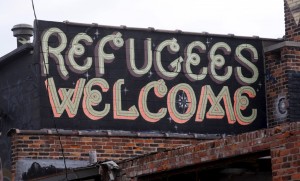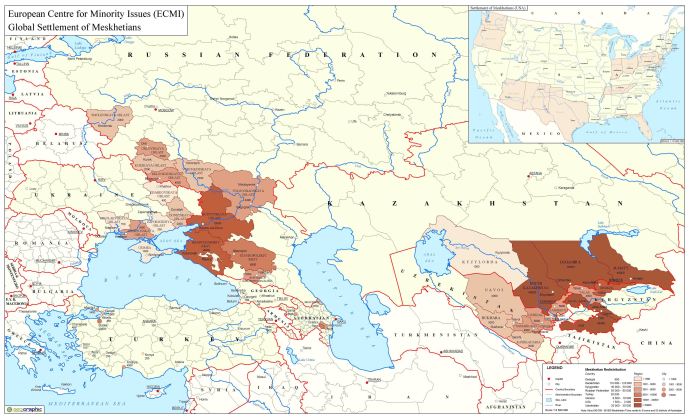“When you go through hell, keep going.” One group of Turks, the Ahiska (or Meskhetian) Turks, have been through a lot and then some. The history of this group spans countries, years, and systematic discrimination.
Exile
Originally from what is now southern Georgia, these Turks were exiled in 1944 during Joseph Stalin’s reign. Georgia was under the control of the Soviet Union after the Ottoman Empire collapsed in 1922. Stalin was threatened by their potential opposition in the important region near the Turkish border. The Turks were labeled “untrustworthy populations” and must be removed from their homeland.
Migration
After being removed from Georgia, many Turks settled in Uzbekistan, Kazakhstan, and Krygyzstan. Upwards of 17,000 died during the harsh journey and the first four months of their resettlement. They were forced to live under “special settlement regimes” until 1956. They were deprived of all civic and political rights. After Stalin died, his successor lifted some exteme exiles and the settlement regimes. However, he did not allow the Turks to return to Georgia.
After the Fergana Valley Massacre in Uzbekistan in 1989 resulting in 100 Turks dead and more wounded from interethnic tension by Uzbek extremists, the Turks were evacuated to the Krasnodar region of Russia, as well as Azerbaijan, Ukraine, Kyrgyzstan, and Kazakhstan.
Mistreatment and Discrimination
Authorities in Krasnodar refused to recognize the 14,000 Turks there as Russian citizens. They have temporary residence status that they must renew every 45 days. Their children have no birth certificates and thus no legal identity. There are segregated classrooms, no marriage recognition, censorship, forced settlement, inability to work, can’t rent land, can’t trade goods without a propiska (passport), no healthcare, no social security benefits, intimidation, police brutality, and more. The Krasnodar region has more human rights violations than many other places.
Georgia and Russia are in conflict about who should be declared as the Turks’ origin country since neither were independent countries at the time of forced resettlement; the USSR controlled the territory. Thus, neither will give Turks citizenship status, resulting in fewer rights.
Being confronted with different ethnic groups and being discrimination against, the Turks had to refer more strongly to their ethnic roots. Thus, their cultural identity strengthened.
US Refugee Act of 1980
 In 1980, the US Congress created the Refugee Act, prioritizing the immigration of discriminated populations to the United States. One of those groups were the Ahiska Turks. Prior to 2004, there was no Ahiska Turkish community in the United States. Only a handful were in the US, and even then, only on student or work visas or as family- or employer-sponsored immigrants, not as an organized collective migration. By the end of 2007, around 17,000 Turks settled in 66 towns of 32 states in the US.
In 1980, the US Congress created the Refugee Act, prioritizing the immigration of discriminated populations to the United States. One of those groups were the Ahiska Turks. Prior to 2004, there was no Ahiska Turkish community in the United States. Only a handful were in the US, and even then, only on student or work visas or as family- or employer-sponsored immigrants, not as an organized collective migration. By the end of 2007, around 17,000 Turks settled in 66 towns of 32 states in the US.

